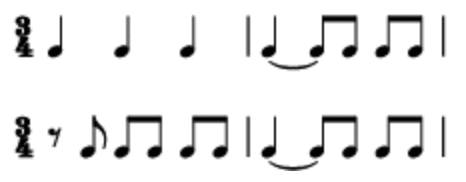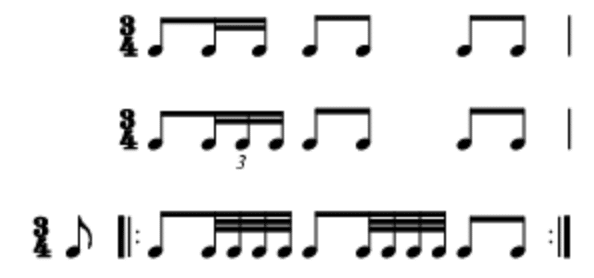Next up in the orchestral excerpts series is Maurice Ravel’s Bolero! We actually have this excerpt for both flute and piccolo (granted the piccolo’s excerpt is not as exposed as the first flute’s), and the second flute also plays a major role at the beginning of the piece.
As stated in the first blog of this series (check it out if you haven’t already!), if you take away anything from this post, let it be that the context of which an excerpt appears matters. The context determines the emotion with which you play, dynamics, articulation, and much more. As such, here is the background information and context of Bolero!
Ravel was commissioned by Russian dancer Ida Rubinstein (1885-1960) to orchestrate Isaac Albéniz’s suite for piano titled Iberia. However, as the orchestration rights had been given to another conductor, Ravel had to switch gears. As the story goes, he was on vacation with Gustave Samazeuilh (a music critic and close friend) when he came up with the melody that is used throughout Bolero. Ravel asked Samazeuilh “Don’t you think this theme has an insistent quality? I’m going to try to repeat it a number of times without any development, gradually increasing the orchestra as best I can,” and proceeded to begin the score upon their return to Paris. (1) Five months and a title change later (as it was originally titled Fandango), Bolero was completed!
Bolero is a 15-minute Spanish-flavored composition that is essentially one gradual and ginormous crescendo. The simple theme is repeated over and over in different timbral and instrumental combinations underneath the snare drum, which has the same rhythm the entire piece:

As the title suggests, this rhythm in the snare drum is modeled after that of a Bolero, a popular Spanish dance or song in triple meter and at a moderate tempo:

These rhythms are also closely related to those of the early polonaise, which look even more similar to the rhythm Ravel employs than the early Bolero rhythms:

Rubinstein danced the main role during the premiere of Bolero at the Paris Opera on November 22, 1928. The original choreography depicted her dancing on a table in a bar, and others joined her as the music continued. Ravel, however, envisioned a factory as the setting of the music as he was inspired by the relentless action of the machines and thought it was the perfect visual metaphor for the steadiness of the bolero rhythm throughout the piece (4).
Performance Considerations
Ravel claimed the piece was to be “simple and straightforward throughout, without the slightest attempt at virtuosity” (5). As such, the excerpt should be played simply and straightforwardly, which is easier to say than it is to do! The flute introduces the bolero theme, playing only with the bolero rhythm in the snare and the strings. The rhythm is deceptively difficult – while it looks easy, it must be absolutely perfect and aligned with the accompanying instruments. Keep in mind there are multiple moments throughout the excerpt where the flute’s 16th notes are against sextuplets in the snare.

I recommend a lot of practice with the metronome – after precision is gained with the met on each beat, set it to click once per measure, then once every other measure, once every third measure, etc. I also encourage you to set the metronome to the offbeats and practice in the same way – after achieving perfection on each offbeat, then aim for precision on the “and” of beat one in the first measure, then only “and” of beat one every other measure, and so on. After extensive work with the metronome, practice this excerpt after doing some jumping jacks to get your heart rate up (imitating anxiety), and then ensure you can still play it with rhythmic precision. Finally, make sure that the breaths you decide to take do not interrupt the rhythm.
Since the flute sets the mood for the entire piece, you must also carefully consider the tone color – I like to shoot for something that is soft and misty. Keep in mind that even though the solo is low (it goes down to a C), you shouldn’t push – the full sound that we often strive for in the low register is not appropriate for this excerpt. The pianissimo dynamic that is marked is a true pianissimo, especially considering the piece is a gradual crescendo.
When the first flute’s solo ends at rehearsal 1, the second flute enters, playing the bolero rhythm along with the snare drum. The clarinet then continues with the theme, introducing a new timbre and color (notice it is also slightly louder than when the flute played the theme – contributing to that slow and steady crescendo!)

Do you have any other tips or tricks when it comes to working on Bolero? I’d love to hear them in the comments!
(1) San Francisco Symphony, “Ravel’s Bolero,” accessed May 5, 2023, https://www.sfsymphony.org/Data/Event-Data/Program-Notes/R/Ravel-Bolero.
(2) Willi Kahl and Israel J. Katz, “Bolero,” Grove Music Online, 2001, accessed May 5, 2023, https://doi.org/10.1093/gmo/9781561592630.article.03444.
(3) Kahl and Katz, “Bolero.”
(4) Brett Van Gansbeke, “Bolero,” accessed May 5, 2023, https://www.orchestralbassoon.com/ravel-bolero.
(5) San Francisco Symphony, “Ravel’s Bolero.”
